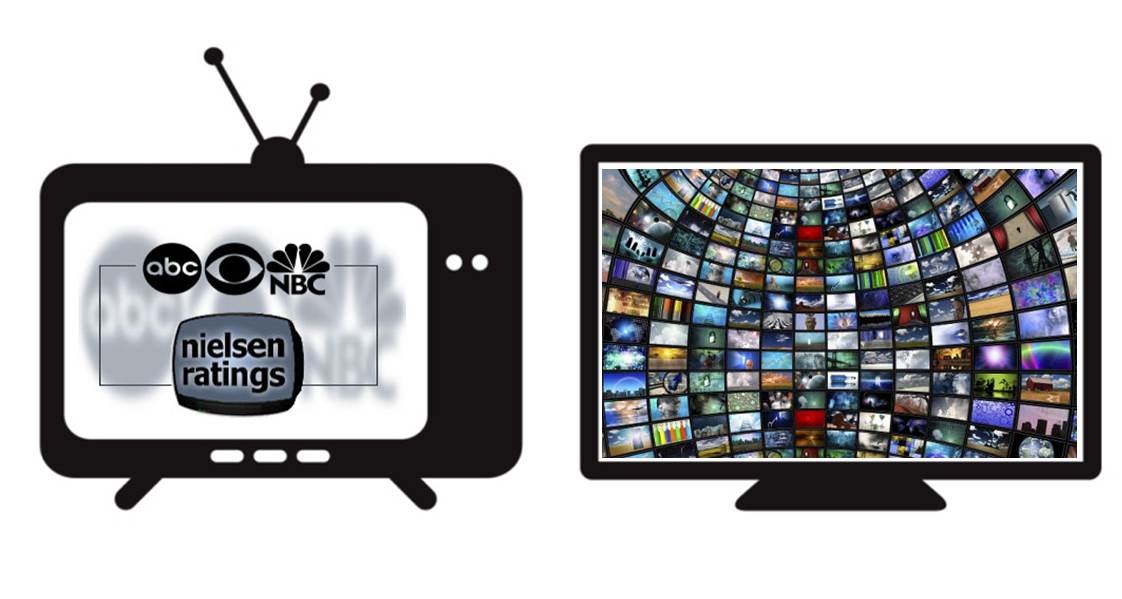The (Rating) Point of No Return – Part II
Second of a Two-Part Look at Local Television’s Tantalizing Transition to Impression-Based Buying

Image Source 1, Image Source 2
NOTE: Click here to review Part I of this series.
PART II – MAKING A LASTING IMPRESSION
Part I of this series introduced Rita the Rating Point, exploring her decades-long contributions to local television advertising – and the realistic possibility that Rita may be ready for retirement. Before Rita rolls off into the sunset, though, buyers and sellers alike will need to understand the key advantages and challenges of shifting the multibillion-dollar local TV advertising industry away from rating points and cost-per-point (CPP) metrics to a world of impressions and cost-per-thousand (CPM).

Rita the Rating Point; circa 2002 (Image Source: Cox Media archives)
Advantages of Impression-Based Buying
1. Simplifying the Math – As outlined in Part I last week, rating points are percentages, and the calculation of rating points is a division problem that requires a common understanding of the specific geography being measured. Unless “equivalized” to a common universe, ratings from different markets, zones, etc., may represent audiences of different sizes. Focusing instead on impressions, or the number of viewers exposed to an ad campaign, removes the complicated division, resulting in audience estimates that can be compared – and even combined – across different geographies to give a more comprehensive view of multi-zone and multi-market television campaigns.
2. Leveraging the Long Tail – As media consumption continues to evolve in response to new entertainment options, devices and platforms, a ratings-based system can leave potentially valuable portions of the local television audience on the proverbial cutting room floor. Representing Magna Global on an industry webinar earlier this year, research executive Janice Finkel-Greene summarized this point. “If we use ratings,” she said, “we take little impressions, divide them by a nice big universe estimate, and end up with zero – the right answer is not zero.”1 Consider the example of a kitchen supply store in a cable zone with a population of 100,000 people. Advertising to an audience of 40 engaged viewers on Cooking Channel can provide value for this client; but those 40 viewers would translate into a rating of 0.0 based on the population, causing most advertisers to look elsewhere.
3. Enhancing TV Targeting – The transition to impression-based buying introduces possibilities for moving the television targeting conversation beyond traditional age and gender demographics, such as Men 18-34 and Women 25-54. “Because impressions represent people, not percentages,” NCC Media’s Nick Garramone explained, “qualitative information about the consumer can be appended to them, greatly enhancing the advertiser’s ability to efficiently and precisely reach their target.”1 These anonymized, blind data matches produce aggregated results that enable advertisers to speak more directly to purchase behaviors – a local BMW dealer, for example, pinpointing consumers likely to be in the market for a luxury car – and help pave the way for extended TV targeting capabilities, such as household addressability and dynamic ad insertion in video-on-demand (VOD) programs.
Potential Challenges of Impression-Based Buying
1. Learning a New Language – Ratings-based transactions have been the official language of local TV for more than half a century. Unfortunately, Rosetta Stone does not yet offer resources to help buyers and sellers quickly and uniformly transition away from the existing vernacular of gross rating points (GRPs). Changing the mindset and pivoting to a new model will take time.
2. Converting Legacy Systems – Similar to the language barrier, many of the research platforms and success benchmarks used in local television are rooted in ratings-based calculations and conversions. Systems may need to be upgraded to handle an expanded set of demographic targeting options. Buyers who today aim for minimum weekly GRP totals across broad age/gender targets will need systems in place to help them recalibrate for an impression-based environment that offers more granular targeting at a premium CPM.
3. Improving Measurement – Regardless of whether a campaign is constructed based on ratings or impressions, the audience will only be as good as the measurement methodology. Even as comScore (formerly Rentrak) continues its advancement into local TV measurement and Nielsen prepares to eliminate paper diaries in all local markets by 2018, transitioning to impression-based buying does not alleviate existing measurement challenges at the individual market level.2 “Let me be clear that impressions are not any more reliable than the ratings are,” Magna Global’s Finkel-Greene asserted. “They both experience the same amount of statistical bounce – what we are doing differently is in the usage.”1
Ultimately, the long-term benefits of that different usage are expected to outweigh the short-term challenges of the ratings-to-impressions transition. Advances in programmatic TV buying, VOD dynamic ad insertion, and linear addressability being made by Cox Media and other local television advertising providers point to a question of when, not if impressions will supplant ratings as the accepted currency throughout all of local television. “I think it will take somewhere between three and five years,” Finkel-Greene speculated, “until we have the major agencies, as well as smaller agencies, using impression-based buying as their currency metric.”1
Rita the Rating Point reportedly has already begun the countdown!


References:
1 https://www.youtube.com/watch?v=a3e_4Bk-JnY and https://www.youtube.com/watch?v=L20hBp6eGQg
Connect with a Marketing Expert
Share Post On Social
Related Insights
Connect With Your Local Marketing Expert
You know your business. We know advertising. Together, we can bring your business to more people. Contact a member of our team today. We’d love to help you grow.


